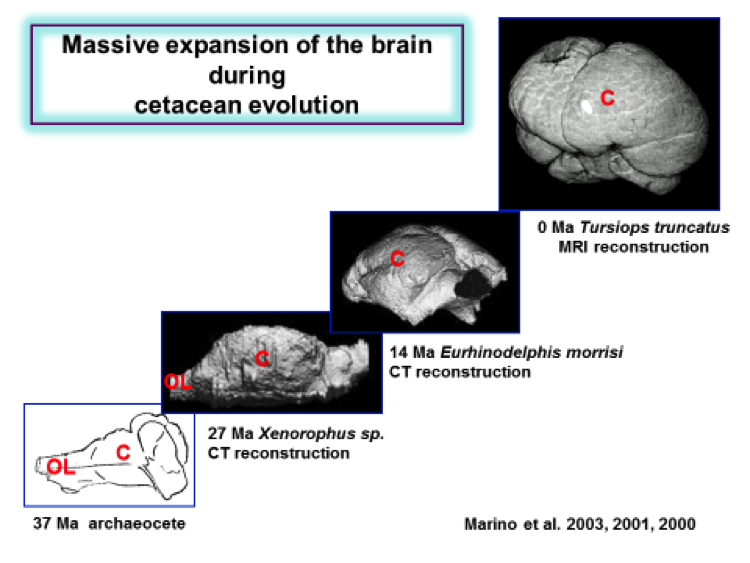How smart are dolphins? - Lori Marino
3,347,044 Views
11,727 Questions Answered
Let’s Begin…
Dolphins are one of the smartest animal species on Earth. In fact, their encephalization quotient (their brain size compared to the average for their body size) is second only to humans. But exactly how smart are they? Lori Marino details some incredible facts about dolphins.
Additional Resources for you to Explore

There’s more on the science of cetacean evolution at this informative site.
Dolphins recognize themselves in mirrors. When they are first confronted with a mirror they check out whether the mirror is an image of themselves or not by making repeated head and body motions in front of the mirror. These behaviors are called contingency checking and they are similar to your waving your hand in front of a video camera and monitor to determine if it is live or recorded.
Dolphins then show that they recognize themselves by using the mirror to check out different parts of their body they cannot see without the mirror. The conclusive test comes when they are “marked” with a substance they can see in a mirror but not feel. When they see the mark on their own body through the mirror they twist and turn in front of the mirror to expose the marked part – showing that they are using the mirror to investigate themselves. Watch a short video of the two dolphins, Presley and Tab, showing self-directed behavior at a mirror.
By the way, there are a number of different ways we made sure that the dolphins recognized themselves. Some of those ways included marking them but not giving them a mirror and pretending to mark them. These conditions are called controls because they allow us to eliminate hypotheses that compete with the one we were testing. For those of you who want to read the original article, it is here.
Interested in dolphin tool use and culture? Field studies of dolphins and whales have revealed two important insights. First, one does not need hands to make and use tools! Second, humans are not the only animals on the planet with cultural traditions. Many others are, including dolphins and whales. These two are combined into one when we examine cultural tool use in dolphins. Here are videos about the two examples we discuss in the lesson: Creating “mud nets” to catch fish and The Dolphin Sponge Club.
There is tool use and culture in dolphins and whales? Watch Dolphin Strand Feeding, where bottlenose dolphins off the coast of South Carolina cooperate to herd fish onto the shore and then slide up on the banks to snap up the fish. Requires timing and coordination, as well as sophisticated communication. Amazing, isn’t it?
Finally, take a look at the book: The Cultural Lives of Whales and Dolphins (2014) . In this book cetacean biologists Hal Whitehead, who has spent much of his life on the ocean trying to understand whales, and Luke Rendell, whose research focuses on the evolution of social learning, open an astounding window onto the fascinating culture beneath the waves. As Whitehead and Rendell show, cetacean culture and its transmission are shaped by a blend of adaptations, innate sociality, and the unique environment in which whales and dolphins live.
About TED-Ed Animations
TED-Ed Animations feature the words and ideas of educators brought to life by professional animators. Are you an educator or animator interested in creating a TED-Ed Animation? Nominate yourself here »
Meet The Creators
- Educator Dr. Lori Marino
- Producer Zedem Media
- Director Michael Kalopaidis
- Artist Jeanne Bornet
- Animator Maria Savva
- Sound Designer Andreas Trachonitis
- Script Editor Alex Gendler
- Narrator Addison Anderson



